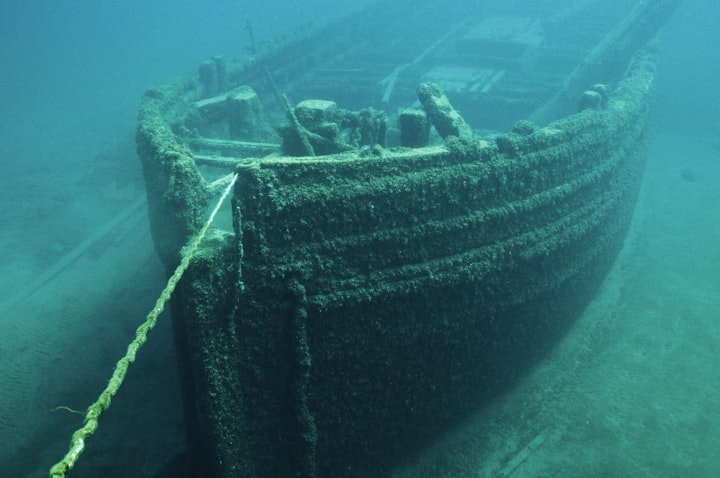The Titanic: Triumph to Tragedy on the North Atlantic
How human hubris and oversight led to disaster on an 'unsinkable' ship
Introduction
The RMS Titanic, often described as the "unsinkable" ship, has remained one of the most infamous maritime disasters in history. Launched into the collective memory of the world, the story of the Titanic is one of grandeur, human error, tragedy, and an enduring legacy. More than a century after its ill-fated maiden voyage, the Titanic continues to captivate scholars, enthusiasts, and the public. This article aims to delve into the depths of the Titanic's story, exploring its conception, the details of its tragic voyage, and the lasting impact it has had on maritime safety and culture.
The Conception of the Titanic
The story of the Titanic begins with the White Star Line, one of the most prominent shipping companies of the early 20th century, seeking to outdo its main competitor, the Cunard Line. The vision was to create a trio of ocean liners that would excel in luxury and size, rather than speed. The Titanic, along with its sister ships the RMS Olympic and the RMS Britannic, was the result of this aspiration.
Built at the Harland and Wolff shipyard in Belfast, Northern Ireland, the Titanic was a marvel of modern engineering and opulence. Spanning 882 feet in length and with a gross tonnage of over 46,000 tons, she was the largest movable man-made object of her time. The ship boasted state-of-the-art technology, including a double-bottomed hull and watertight compartments, which contributed to the widely held belief that she was unsinkable.
The Maiden Voyage
On April 10, 1912, the Titanic set sail from Southampton, England, bound for New York City. The passenger list was a microcosm of early 20th-century society, from wealthy industrialists and celebrities to immigrants dreaming of a new life in America. The ship's accommodations ranged from opulent first-class suites to modest third-class cabins, designed to cater to the full spectrum of society.
The voyage proceeded without incident until the night of April 14, when the Titanic struck an iceberg in the North Atlantic. The collision caused the ship's hull plates to buckle, allowing water to flood into the supposedly watertight compartments. The design flaws and overconfidence in the ship's invulnerability quickly turned a tale of triumph into one of tragedy.
The Sinking of the Titanic
At 11:40 PM, the lookout sounded the alarm, but the efforts to avoid the iceberg were in vain. The ship was deemed unsinkable due to her compartment design, yet the iceberg's glancing blow produced a fatal wound. Water began to flood the ship, and it soon became clear that the Titanic was doomed.
As the situation worsened, it was discovered that there were not enough lifeboats for all passengers and crew, a result of outdated maritime safety regulations which the Titanic actually exceeded. The lifeboat shortage, combined with a lack of proper emergency procedures, led to chaos and confusion during the evacuation. Women and children were given priority, but due to misinformation and misunderstanding, many lifeboats were launched without being fully loaded.
At 2:20 AM on April 15, the Titanic finally succumbed to the icy waters, taking with her over 1,500 souls. The ship broke apart as it sank, with the stern and bow coming to rest on the ocean floor about a third of a mile apart.
The Aftermath and Legacy
The sinking of the Titanic was a global shock, leading to an outcry for improved maritime safety. The disaster resulted in the first International Convention for the Safety of Life at Sea (SOLAS) in 1914, which established new regulations for emergency equipment, lifeboat drills, and wireless communications.
The Titanic's legacy extends beyond regulations. It has inspired countless books, films, and articles, each retelling the story from different perspectives. The discovery of the wreck in 1985 by a team led by oceanographer Robert Ballard further cemented the Titanic's place in history, allowing for a direct connection to the past and sparking a new wave of interest.
Conclusion
The RMS Titanic, once a symbol of human achievement, became an eternal testament to the limits of our hubris and the importance of respecting the forces of nature. The tragedy highlighted the need for humility and constant vigilance in the face of technological advancement. The lessons learned from the Titanic have shaped maritime safety, ensuring that the memory of those who were lost continues to serve a purpose. As we reflect on the Titanic's story, we are reminded of the fragility of life and the enduring power of human stories to evoke emotion and drive change. The Titanic will forever remain an indelible part of our collective consciousness, a poignant reminder of the weight of our actions and the value of foresight.






Comments
Rajeshkumar G is not accepting comments at the moment
Want to show your support? Send them a one-off tip.